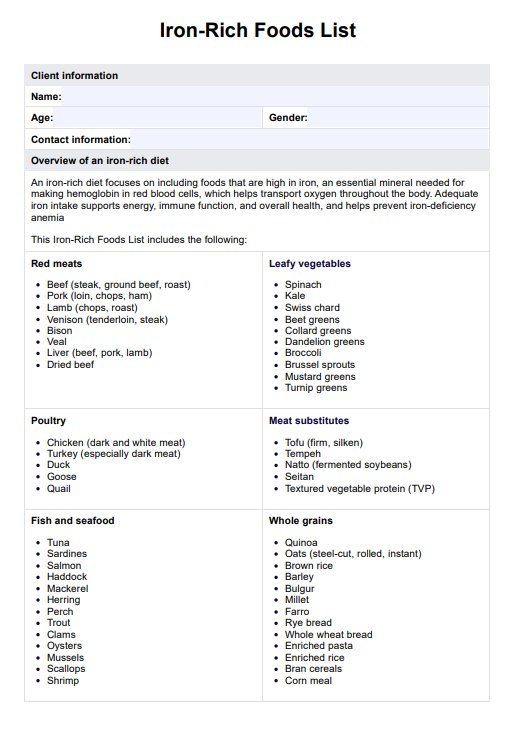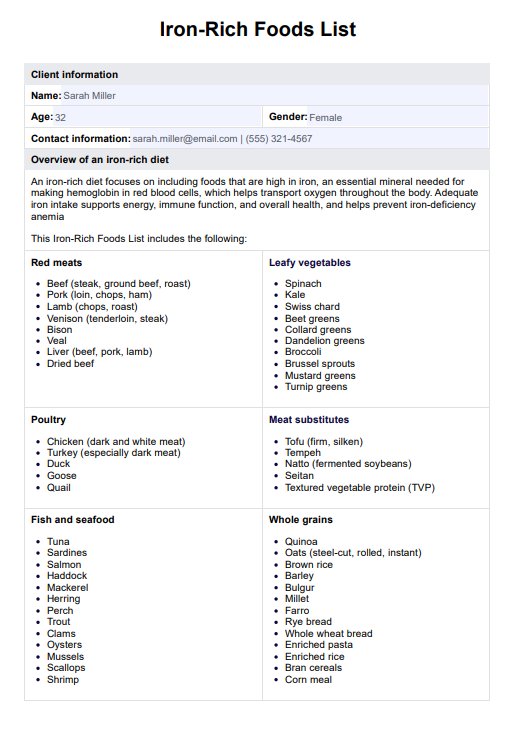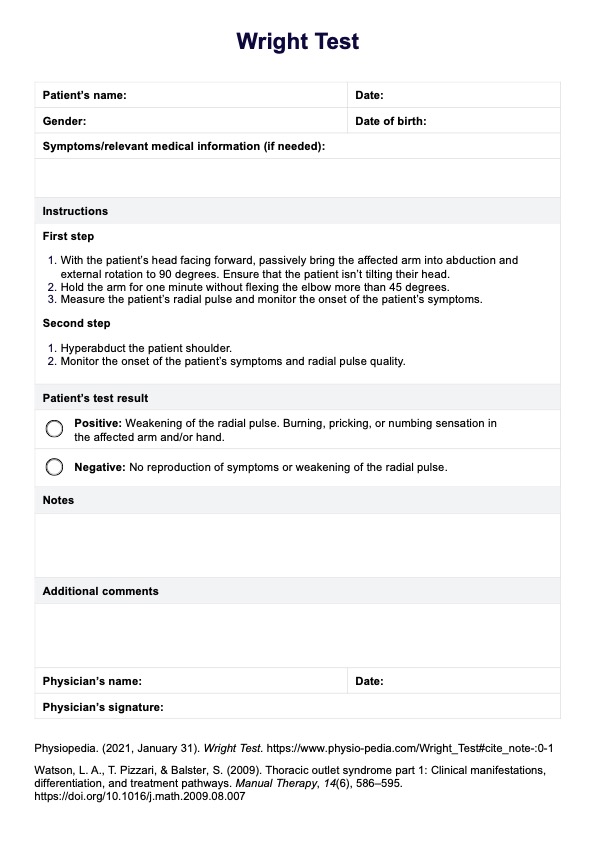Iron-rich Foods List
Download our free Iron-rich Foods List to help you shop for iron-rich foods to add to your diet!


What are iron-rich foods?
Before discussing iron-rich foods and our Iron-rich Foods List template, let’s briefly discuss what iron is.
Iron is an essential mineral that our body needs. It is necessary because it plays a vital role in blood production, specifically the formation of hemoglobin. Hemoglobin is the protein inside red blood cells. Its primary function is to deliver oxygen to the body's different tissues. It also helps with the formation of myoglobin, which is a protein that carries oxygen to our muscles. It also aids in the production of energy in the body.
There are two types of iron: heme and non-heme. Heme iron can be obtained by consuming food made of animals. Non-heme iron can be obtained by consuming food made of leafy vegetables, whole grains, legumes, nuts, and seeds. Sometimes, non-heme iron can be found in animal products, particularly those made from herbivores.
Iron-rich food lists tend to contain the following:
- Red meats (e.g., beef, pork, venison)
- Poultry (e.g., chicken, turkey, duck)
- Fish (e.g., tuna, sardines, salmon)
- Meat substitutes (e.g., tofu, tempeh)
- Leafy vegetables (e.g., kale, spinach, broccoli)
- Whole grains (e.g., quinoa, oats, brown rice)
- Legumes (e.g., lentils, chickpeas, soybeans)
- Beans (e.g., black beans, kidney beans, navy beans)
- Nuts (e.g., almonds, cashews, macadamia nuts)
- Seeds (e.g., flaxseeds, pumpkin seeds, sesame seeds)
- Fruits (e.g., dried apricots, strawberries, watermelon)
- Cereal
Iron-rich Foods List Template
Iron-rich Foods List Example
How does our Iron-rich Foods List work?
We created an Iron-rich Foods List template to help organize grocery lists for those who want to add more iron to their diet. Anyone can use this template, including those confident enough to create a diet plan with a good iron balance for themselves or dietitians and nutritionists looking to create lists for their clients.
Our food list template has several blank sections for customizability. Anyone using this template simply needs to fill out the following sections when they download a copy of our Iron-rich Foods List PDF template:
- Red Meats
- Poultry
- Fish
- Meat Substitutes
- Leafy Vegetables
- Whole Grains
- Legumes
- Beans
- Nuts
- Seeds
- Fruits
There’s also a box labeled as Miscellaneous for any other iron-rich product they want to include, like cereals (they have to check the nutritional values first), iron-fortified pasta, etc.
There’s also a box to indicate things to avoid (this will vary from person to person and their respective dietary needs and health statuses).
Lastly, there’s an Additional Notes box. People using the template can write down anything concerning the list they’ve made and the diet plans they have for themselves. An example would be: “I need to consume [insert foods here] to boost the amount of iron in my body because it’s confirmed that I have an iron deficiency.”
When is it best to start adding iron-rich foods to a diet?
The best times to consider adding iron-rich foods to a diet are the following:
Infancy to pre-teen years.
As a parent, you must ensure your little tykes get all the necessary nutrients, minerals, and vitamins to develop and grow well. Iron deficiency is a common problem among children, so it’s best to ensure they get enough iron so oxygen can be distributed optimally throughout their bodies.
During menstrual cycles and pregnancy.
Women should consume iron-rich foods during their menstrual cycles because they will lose iron during menstruation. Doing so should ensure they maintain the necessary amount of iron their bodies need.
They should also consume iron-rich foods during pregnancy to ensure their fetuses thrive and to support breastfeeding.
Whenever people engage in physically demanding activities.
Those physically active, especially athletes, require much energy to perform optimally for whatever activity or sport they’re doing. They likely require more power than the average person and need more iron. By ensuring they are consuming the necessary amounts of iron, they can meet the demands of muscle functions and oxygen transport of their bodies.
What are the benefits of consuming iron-rich foods?
They help regulate oxygen transport.
Since iron aids in the formation of hemoglobin, it can help ensure that the hemoglobin of red blood cells performs its function of distributing oxygen throughout the body.
Lower the risk of getting anemia.
Anemia is a blood-related condition characterized by hemoglobin deficiency and the decline of red blood cell amounts in the body. If this isn’t managed well, it can lead to unwanted complications such as heart problems, pregnancy issues, postpartum depression, developmental issues and delays, fatigue, and cognitive impairment, to mention a few. Iron deficiency is the common cause of anemia.
One way to lower the risk of getting anemia or managing it is to consume enough iron-rich foods.
They can help ensure a healthy pregnancy.
Pregnant women need to ensure they’re maintaining enough iron in their bodies. Iron-rich foods can help increase the blood volume and oxygen they and their baby need. If a pregnant woman has an iron deficiency, they run the risk of pre-term birth and having low birth weight.
They can boost physical endurance.
Those physically active, especially athletes, will significantly benefit from iron-rich foods. These foods should energize them and ensure their muscles can meet the demands of their activity or sport.
Commonly asked questions
Having too much iron is a bad thing. It can lower the body’s ability to absorb zinc, cause ulcers and inflammations, and lead to organ failure.
Yes. You can get enough iron by consuming plant-based foods, but you might need supplements to boost your iron intake.
Those with iron deficiency will likely have pale skin, dizziness, headaches, shortness of breath, fatigue, weakness, rapid heartbeats, brittle nails, and hair loss.















































































































